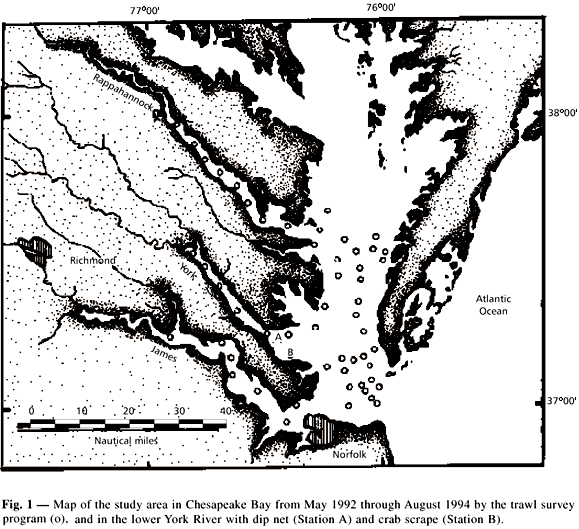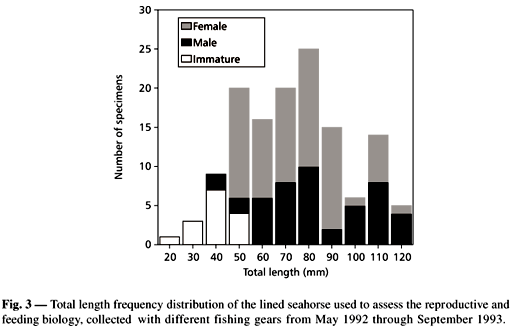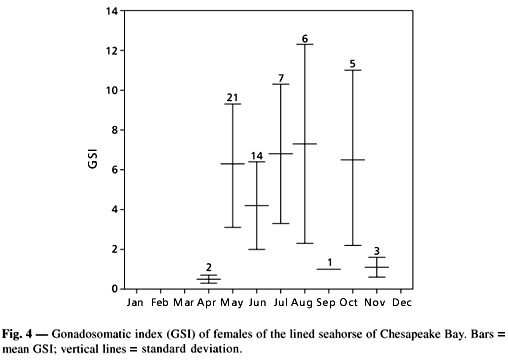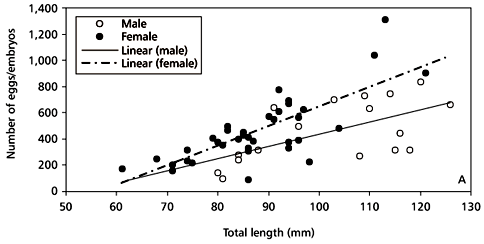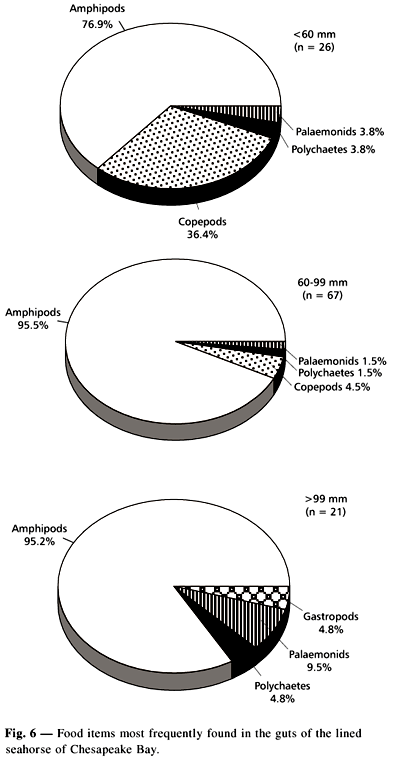The reproductive and feeding biology of the lined seahorse, Hippocampus erectus, was studied in Chesapeake Bay. Seahorses are monogamous, and males incubate the eggs received from females in a closed brood pouch (= marsupium). Females do not play any parental care after mating. Total sex ratio and the operational sex ratio was strongly skewed toward females. Males and females had similar number of eggs/embryos and hydrated oocytes, respectively. The number of eggs/embryos found in the male brood pouch varied from 97 to 1,552 (fish from 80 to 126 mm TL), whereas the number of hydrated oocytes in female varied from 90 to 1,313 (fish from 60 to 123 mm TL). Both, the number of eggs/embryos and hydrated oocytes were better linearly correlated to total weight than to total length. The small snout and mouth size limits the feeding of the lined seahorse to small prey size. Amphypods were the predominant food items found in the guts, especially Ampithoe longimana, Gammarus mucronatus, and Caprella penantis. The lined seahorse is not abundant in Chesapeake Bay, but keeps a breeding population which is probably brought inside the bay by currents on drifting vegetation. Chances to find a partner may be difficult because of its low abundance, due to turbid waters, and its sedentary behavior.
parental care; fecundity; fertility; amphipods; estuary

